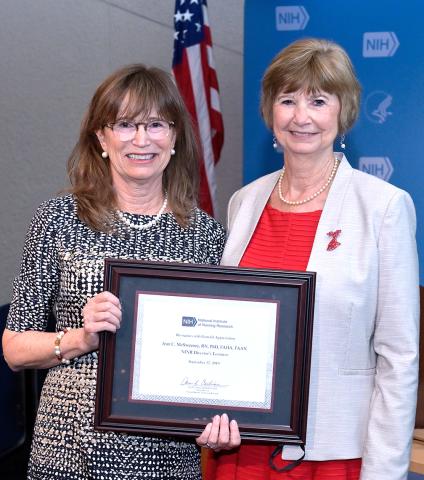Heart Attack in Women
Listening to Women Guides McSweeney’s Research

Dr. Jean McSweeney did not set out to conduct revolutionary studies that identify the ways in which women’s heart disease differs from that of men.
Rather, in her early research, McSweeney’s goal was to identify the factors that helped patients change their health behaviors over the long term after myocardial infarction (heart attack). However, during the course of this line of research, she discovered that the heart attack symptoms reported by women in her studies greatly differed from those generally considered “standard.”
Following this realization, McSweeney shifted her focus to better understand women’s reports of their own heart attack experiences. Not only did she identify the most common symptoms reported by women before and during a heart attack, but also McSweeney built upon this finding to become an internationally recognized expert on women’s heart disease over the course of her research career.
McSweeney noted that women were generally excluded from clinical trials until 1993, when Congress mandated adequate inclusion of women in NIH-sponsored clinical trials. Thus, the instruments developed to identify coronary heart disease (CHD) had been based almost entirely on symptoms reported by men. McSweeney discovered that these instruments did not capture the symptoms women reported most frequently before a heart attack (fatigue, sleep disorder, anxiety, shortness of breath and indigestion).
Additionally, many of women’s acute symptoms of heart attack (shortness of breath, weakness, fatigue and dizziness) did not align with the chest pain typically reported by men. To correct this omission, she developed an instrument—the McSweeney Acute and Prodromal Myocardial Infarction Symptom Survey—to predict CHD events in women.
McSweeney hopes future research can address the higher CHD mortality rates experienced by minority and younger women. She cited progress in white women’s awareness of CHD as women’s number-one cause of death, while minority women’s rate of awareness has risen only to that held by white women more than 20 years ago.
She closed by noting that “listening to women guided this research,” and encouraged researchers to seek out women’s experiences as they design and evaluate CHD interventions.
McSweeney is a professor and associate dean for research at the University of Arkansas for Medical Sciences in Little Rock. Her lecture is available at https://www.youtube.com/watch?v=ih812hzWLPk.
